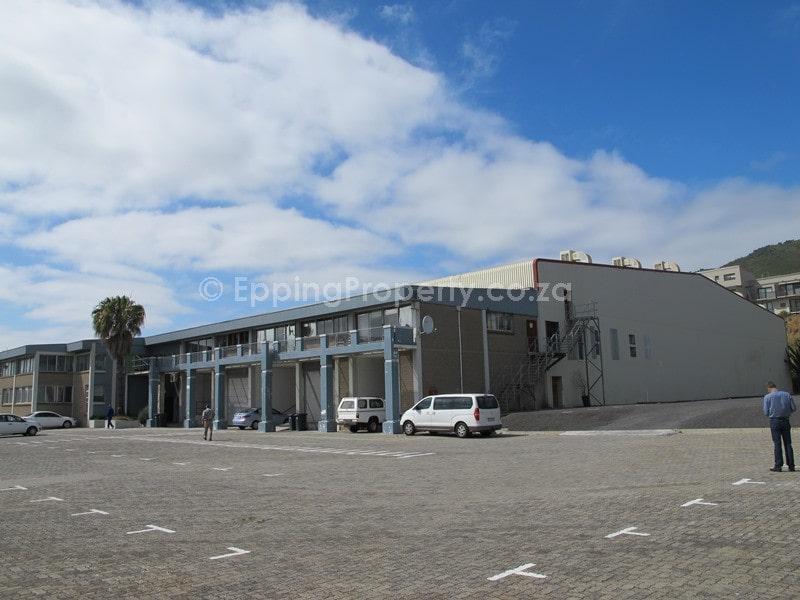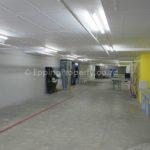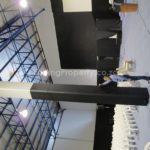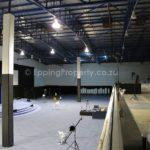
LET
Warehouse Rent Woodstock. What a location!! High warehouse with offices and abundant parking. 10m height to the eaves at the highest point. 5,000m² in total which includes offices. Occupation is possible from 01 February 2017 or by negotiation.
PROPERTY – TO RENT OR NOT TO RENT?
To lease or not to lease? That is the question being asked around an increasing number of board tables as company’s eye off balance sheet property assets against new capital for core business activities.
According to leading property brokerage, Epping Property, International research has shown that the best option is usually to sell existing property assets and lease back the same building or new premises.
“The opportunity lost from not actively using the cash tied up in property, outweigh most benefits of direct property ownership by corporate organisations. Although the basic debate between direct ownership and leasing has always been around, with some indication of a cultural bias toward ownership, the past couple of years have brought the issue more sharply into focus.”
According to Epping Property, higher expectations by shareholders and equity partners meant many companies were coming under greater scrutiny. “Companies don’t have the luxury of being able to produce average returns in today’s market. Shareholders expect much more than that these days and the attitudes of directors have also changed. On an ongoing basis, the reinvestment of that money into the core business of the company is usually going to have enormous ongoing benefits.”
“In most cases the decision boiled down to a basic equation,” says Tony Bales of Epping Property. “If you are a retailer and you usually have about a 25 percent return on your funds from the retail business, why would you have money tied up in property? Unless it is actively managed, the returns will not be substantial enough.”
“One of the main arguments given by companies for their decision to own a property rather than lease is because it offers greater control over the site and therefore greater flexibility to use the property in the manner it wanted.”
“However, from a physical or operational view,” advises Bales, “it makes little difference if the company was the legal owner or the tenant of the property. Furthermore, experience has shown time and again that where the lessee is a substantial company, the value of its rental covenant is itself sufficient to place the company in a position of strength when it comes to dealing with the owner.”
“An example is when executives at Reader’s Digest met to discuss how to free up some cash to funnel back into its main businesses – the answer lay in the publisher’s huge Canary Wharf headquarters in London. The chief financial officer stated that they realized they should not be in the real-estate business and so Reader’s Digest sold the complex for nearly $100 million and is now leasing back space in the building, a move that Wall Street has applauded and that has left investors very pleased through the investment of that cash in new content and distribution channels instead of having it sitting in the ground. The sale also represents about $1 a share for investors.”
According to Bales, this thinking is also evident in South Africa where there have been some sale and leaseback transactions.
“This is an increasing trend with scores of firms raising large sums of cash without visiting the stock or debt markets. They are simply selling their office, warehouse and manufacturing properties and then leasing back the space. Sale and leasebacks, as the transactions are called, aren’t a new concept, but they have picked up speed over the past months, as companies perceive the real-estate cycle to be near its peak.”
“The trend has gained steam of late for several reasons. For one, publicly traded companies in all industries are under pressure by investors to shed non-core assets and focus on their main businesses. Also, massive layoffs and big mergers in the past few years have left many companies with lots of excess space. We are seeing organisations from the largest listed companies to private emerging companies using this as a financial vehicle. From the company’s side, it’s the pressure to continue to increase earnings,” says Bales.
“Of course, healthy property prices are also driving companies to consider getting their property off their books. No one is saying that prices have peaked, but many of the companies certainly feel they are getting a good price for their properties these days.
Nationally, property prices jumped an average of almost 10% in 2015 from the year before. Real-estate companies, meanwhile, are using these higher property prices to push even more sale and leasebacks.”
“One of our philosophies,” says Bales, “is that if you’re not in the real-estate business, in most cases you shouldn’t own property. Sale and leasebacks typically make a company’s balance sheet more attractive by increasing the return-on-asset figure that number analysts consider when making their share recommendations. Analysts typically don’t give much weight to owned real-estate assets in evaluating companies, because such assets are seen as liquid.
On the other side of the equation, buyers benefit because rental rates are still rising across the country, so they can lock in healthy leases that will provide solid returns for several years.
Bales concludes that what distinguishes a smart sale-lease-back transaction from a dumb one all depends on what a company does with the cash raised from the sale of the real estate. “Companies that redirect the money into a prudent acquisition or some other fast-growing investment, or who use it to lower debt, will benefit from sale-leaseback transactions.
Search for Industrial Properties for Rent or for Sale
(Select Location and Property Type and use the slider to determine applicable Size and Price)
Warehouse Rent Woodstock
Property Details
Type: Rented
Occupation Date: March, 2017
Rentable Area: 5,000.00 m²
Property ID: 246
Additional Features:
Free Standing, Large Floor-to-Ceiling Height, Large Yard, Occupation immediate, Sprinklered, Woodstock
Tags:
Let





